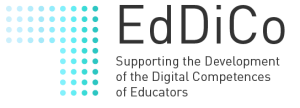eLene4Life is an Erasmus+ project that supports curriculum innovation in higher education (HE) through the development of active learning approaches for transversal skills, with the ultimate aim of improving students’ employability. eLene4Life brings together a group of five European universities, two higher education associations and a Foundation specialised in university-corporate cooperation.
According to the 2018 World Economic Forum Report ‘Towards a Reskilling Revolution: A Future of Jobs for All’, the rise of artificial intelligence, robotics and other digital developments is upending the primacy of human expertise in the economy. The individuals who will succeed in the economy of the future will be those who can complement the work done by mechanical or algorithmic technologies, and ‘work with the machines’. The 2018 European Commission Proposal on Key Competences also draws attention to these disruptions affecting European societies and economies, stating that “Skills such as creativity, critical thinking, taking initiative and problem solving play an important role in coping with complexity and change in today’s society.”
In a previous Erasmus+ project, eLene4Work, the development of HE students’ (digital) soft skills was experimented through the use of MOOCs and OERs. The results showed that, while autonomous learning indeed played a significant role, real impact would only come from fully integrating these into the curriculum. The project also found a mismatch between employers’ expectations and students’ perceptions of the labour market with respect to these transversal skills.
The Lessons Learned Kit takes the form of three multimedia publications based on the project outputs.
State of the Art Analysis: innovative active learning approaches in higher education and the corporate sector for the development of soft skills (results of Transnational Analysis-HE and Transnational Analysis-Corporate).
Implementation and Experience: results of the students’ and teachers’ learning and teaching experience supported by the Dynamic Toolkit and the Pilot Projects.
Network and Discussion: recommendations for transferability supported by the Community of Practice and the results of the discussion-based MOOC, and including key messages from the overall project.

